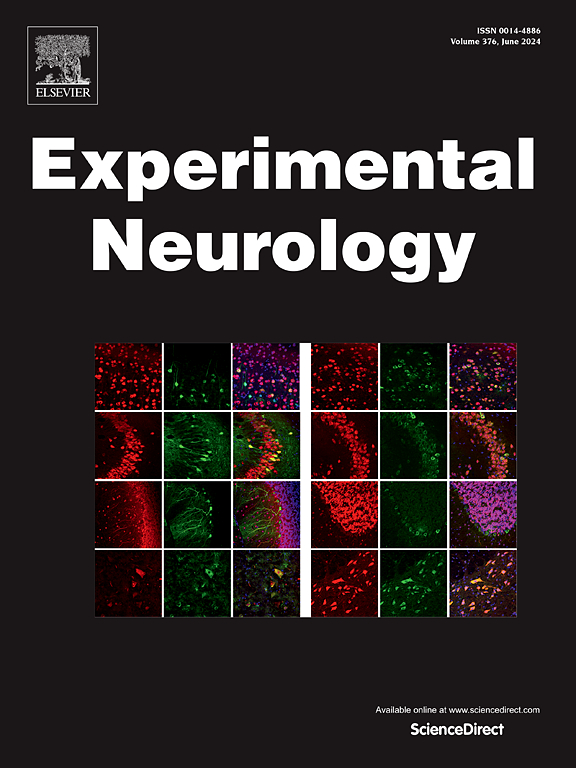Behavioral, biochemical, and molecular characterization of MPTP/p-intoxicated mice
IF 4.6
2区 医学
Q1 NEUROSCIENCES
引用次数: 0
Abstract
The 1-methyl-4-phenyl-1,2,3,6-tetrahydropyridine (MPTP) mouse model remains the most extensively utilized animal model for Parkinson's disease (PD). Treatment regimens are classified into three categories: acute, subacute, and chronic. Among these, the MPTP with probenecid (MPTP/p)-induced chronic mouse model is favored for its capacity to sustain long-term striatal dopamine depletion, though the resultant behavioral, biochemical, and molecular alterations require further validation. To systematically evaluate these abnormalities in the chronic MPTP/p mouse model, we conducted observations over a 12-month period. The results showed that these mice displayed reduced locomotor activity, minor gait abnormalities, and anxiety-like behavior within one week following the final MPTP/p injection. No significant motor disorders were observed from 1 to 12 months post-final injection, with exception of increased exploratory activity in the elevated plus maze from 2 to 8 months. One month after the final MPTP/p injection, there was a significant decrease in dopaminergic neurons in the ventral midbrain, which partially recovered after 12 months. A single MPTP/p injection temporarily increased striatal DA and its metabolites. Proteomics of ventral midbrain tissue indicated that the recovery of dopaminergic neurons might be linked to the upregulation of proteins like Bone morphogenetic protein type II receptor (Bmpr2) and Glutathione S-transferase mu 2 (Gstm2) once MPTP toxicity was removed. Our study indicated that the optimal time to evaluate behavioral abnormalities in chronic MPTP/p mouse model is within one week after modeling. Moreover, the upregulated expression of related proteins, such as Bmpr2 and Gstm2, in the ventral midbrain of the model mice after modeling may represent important targets for the future treatment of Parkinson's disease.

求助全文
约1分钟内获得全文
求助全文
来源期刊

Experimental Neurology
医学-神经科学
CiteScore
10.10
自引率
3.80%
发文量
258
审稿时长
42 days
期刊介绍:
Experimental Neurology, a Journal of Neuroscience Research, publishes original research in neuroscience with a particular emphasis on novel findings in neural development, regeneration, plasticity and transplantation. The journal has focused on research concerning basic mechanisms underlying neurological disorders.
 求助内容:
求助内容: 应助结果提醒方式:
应助结果提醒方式:


